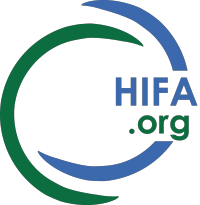Dear Gonca, Nick, Hajime, colleagues
It’s really good to see the extent and important impact of loneliness
highlighted and discussed.
Rightly, this issue is gaining more attention, but I think it has been
growing for a long time. From 2011 onwards, we collected health and rights
information annually from large numbers of school-age children in
Lancashire, a county in the north of England. This was collected directly
from all children (not a sample) in Year 6 (10-11 year olds) and Year 9
(13-14 year olds); in addition to information collected from parents of all
children in their first school year. This resulted in data from and about
approximately 30,000 children each year.
This was part of a ‘health needs assessment and response’ approach within
NHS school health nursing services to better identify children with un-met
support needs and to gain better insights into children’s experiences and
concerns. About 5,000 of the 30,000 children usually received some form of
additional health intervention and support. The collated data was used to
shape and inform public health decision-making, as it provided an uncommon
and localised window on children’s lives.
The tools were short, simply worded, designed and reviewed annually with
the participation of children and young people. In addition to questions
about lifestyle, behaviours, access, use and experience of services, they
included questions about loneliness, hope, optimism, anger, self-harm,
bullying, etc.
In a typical year we found approximately 16% of 13-14 year olds reporting
that they ‘often’ felt lonely, with a higher proportion of girls reporting
this than boys, and varying by localities and levels of deprivation. We
would also find approximately 11% of all 13-14 year olds reporting some
form of deliberate self-harm.
However, when we analysed the data for
children that reported loneliness, we found that approximately 31% of these
children also reported self-harm, providing an important proxy red-flag for
community school nurses.
Further to that, when we analysed the data for children and young people in
a sexual minority (lesbian, gay or bi-sexual) we found that they were over
8 times more likely to report loneliness and 7 times more likely to have
self-harmed.
The annual process continues to the present day after it was adopted and
expanded by the local government authority.
The data also allowed us to
better understand other factors and social determinants relating to
children and young people’s well-being, such as the effects of violence
exposure (1) and also
additional vulnerabilities of groups such as children and young people in
sexual minorities (2) unfortunately not
open access, but happy to share personally if anyone would like it.
(1) (https://doi.org/10.1007/s00038-020-01340-3 open access
(2) (https://doi.org/10.1093/pubmed/fdy167
Best wishes
Andrew
CHIFA profile: Andrew Clarke is a Senior Health Advisor for Save the Children and is a paediatric nurse and public health specialist by background, working in low income and fragile settings for over 20 years. Particular interests in human rights-based approaches, social determinants, and low cost innovation. He is a member of the CHIFA Steering Group. andrewcws AT gmail.com

